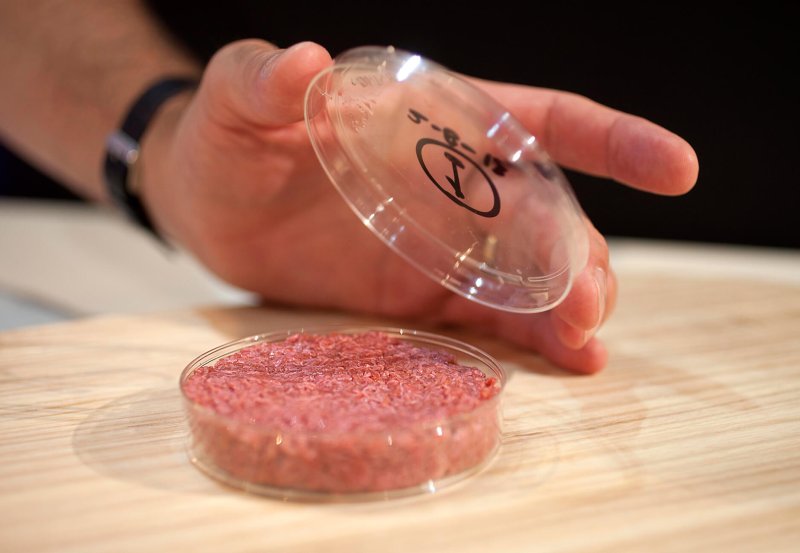Cell based meat is meat that is grown from a tissue biopsy of cells taken from an animal.
This technology enables the production and consumption of meat and fish without the need for any animals to be slaughtered. Cultured meat is also considered to be an environmentally friendly alternative to factory farming, which is a major producer of greenhouse gas emissions and nutrient pollution.
The exact environmental reduction metrics are still undetermined as there are currently no cultured meat manufacturing facilities operating at scale.
What We Do Know:
According to the Food and Agriculture Organization of the United Nations, emissions from livestock production account for about 14.5% of total greenhouse gas emissions globally. The primary activities responsible for the GHG emissions include feed production and processing and enteric fermentation (farts) from ruminants representing 45 and 39 percent of total emissions respectively.
In order to accurately compare lab grown meat production processes with traditional animal farming it is necessary to understand the land, energy and water use necessary to produce cell based meat at scale. We’re not there yet – however, the simple fact that animals won’t need to be bred, fed, and slaughtered leads scientists to believe lab meat at scale is the most environmentally appropriate way to feed a growing population.
Cell based meat is cultivated in a controlled environment that mimics the environment of an animal.
There are 4 main inputs to cultivate meat: 1. Cell Source 2. Cell Culture Media 3. Bioreactor 4. Scaffold. Each input may have its own unique supply chain and production process — the cell culture media, bioreactor, and scaffolding may be dependent on the specific cell type and cell species being cultured.
Cells are sourced from a tissue biopsy or in select cases may be sourced from a feather or hair follicle.
Cells are placed in a controlled and sterile environment beginning in a small flask and scaling up to a bioreactor.
The exact rate at which cells expand and process to scale up from flask to bioreactor is dependent upon a specific company process and proprietary technology.
Cells are given a nutrient rich cell culture medium (aka food), which enables cells to grow and form into meat.
This cell culture medium contains many critical components including amino acids, vitamins, glucose, inorganic salts, and growth factors. The growth factors are by far the most complex and expensive component to cell culture media. The exact composition of the cell culture media is dependent on a given cell line and cell species, meaning there is no one-size-fits-all approach for the most efficient media solution.
Cells are harvested in a bioreactor until they grow enough to form a suitable amount of meat
Cells have two main jobs once they make it to the bioreactor: 1. Proliferation (division to generate a large number of cells) and 2. Differentiation (cells become the desired and final cell type suitable for consumption). How the cells accomplish these tasks are dependent upon the aforementioned cell culture media, bioreactor design, and in some scenarios a supportive structure for cells to adhere to called a scaffold.
Scaffolds can be considered materials (hydrogel, collagen, mycelium) and tissue construction techniques (such as 3D printing/additive manufacturing, electro-spinning, or electrical stimulation) that are used to turn a slurry of cells into meat products.
The main challenges:
- Cell Line Engineering: developing a cell line suitable for long term replication.
- Cell Culture Media and Growth Factors: developing and manufacturing a formulation that is low cost with optimized cell proliferation.
- Bioreactor Design: creating a bioreactor that is large enough for adequate yield without harming the cells. As the cell density increases there must be mechanisms in place for nutrients and oxygen to reach all cells within the closed system. Also, a bioreactor system must be sterilized to meet food grade standards.
- Efficient Recycling of Cell Toxins: as cells proliferate they release substances like ammonia that can lead to cell death. It is important to consider interventions that enable the re-uptake of potentially toxic excretes.
Recap:
Lab grown meat is molecularly identical to meat and is NOT the same as plant based meat options like Impossible Burger or Beyond Burger.
No animals are killed in the process of producing cell based meat, but the end product is identical to real meat.
What’s the potential?
The processes for making lab grown meat are still under development, but potential benefits include higher yields, lower consumer costs, higher quality, and lower environmental impact. For space enthusiasts: consider the potential of feeding a space station or a Mars colony.
Lab grown meat companies
There are a number of startups globally that are developing cell based meat and foods, with global investments around $1.2 billion. These companies are currently focused on taste, cell culture media, and being able to mass produce at a competitive market price.
Where can I buy it?
Lab grown meat is not available for purchase anywhere in the world. There are some non-meat lab based ingredients available like lab grown heme (derived from soybeans), which is found in the plant-based Impossible Burger. Lab meat is expected to be available for purchase as early as 2021. However, we are about 5 years away before we see cell based meat in grocery stores, sold at an affordable price.
Brooke Sunness has an M.A. in Food Systems from New York University and is the Managing Director at Cell Based Tech. Brooke is a thought leader and influencer in the food and biotech space working closely with private investors to evaluate emerging science, technology and companies. Follow Cell Based Tech on Twitter @cellbasedtech































